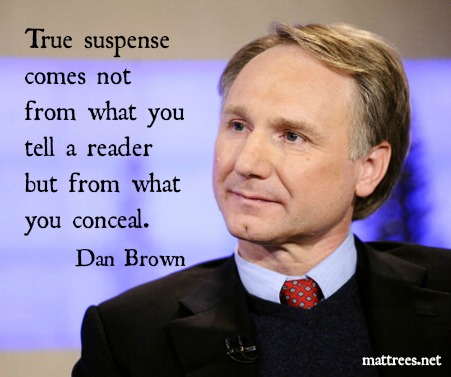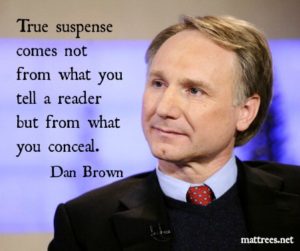Trick readers, but don’t hoodwink them
In his fabulous essay The Simple Art of Murder Raymond Chandler wrote that “The solution must seem inevitable once revealed.” That means the end of a thriller or mystery mustn’t turn on tricks or hidden clues. There must be nothing that the reader couldn’t have figured out, if they truly wanted to. Certainly nothing that makes the reader feel cheated.
So how do you create a conclusion to a thriller like that?
 In a BBC interview to promote his book Inferno last week Dan Brown had this to say:
In a BBC interview to promote his book Inferno last week Dan Brown had this to say:
“I really believe that true suspense comes not from what you tell the reader, but from what you conceal. That is the trick to writing something suspenseful. If you do your job well, most readers will not get it. And then when you tell them, they’ll look back and say, ‘I can’t believe I didn’t see it. It was right there in front of me.’ You never want a reader to look back and say, ‘Well, how was I ever going to guess that.'”
The Hound of the Baskervilles is a famous Sherlock Holmes story. More famous frankly for its spooky atmosphere and its movie depictions than for its employment of plot. It’s the greatest example of a cheating author in crime fiction. Just the kind of plot that leaves a reader perplexed and upset in the manner Dan Brown wants to avoid.
How does Holmes solve the mystery? By referring to a painting on the wall of Baskerville Hall, which makes clear what really happened. No one, including the narrator Dr. Watson, had paid attention to the picture, otherwise they too would’ve solved the mystery. The reader doesn’t even know of the picture’s existence until Holmes tells Watson to take a look at it, after he has declared who the bad guy was.
That’s cheating.
The Russian playwright Anton Chekhov said that if a gun is brandished in Act I, it must be fired in Act III.
Let’s switch that about and make a rule for thrillers: If a gun is fired in Act III, let the reader see someone brandish it in Act I.

 If you read only one Lee Child thriller, read ’61 Hours’
If you read only one Lee Child thriller, read ’61 Hours’
Leave a Reply